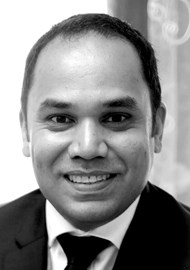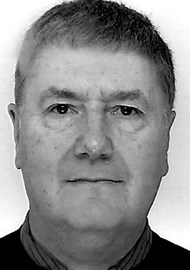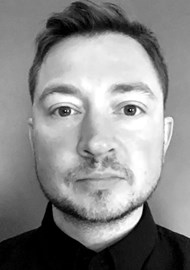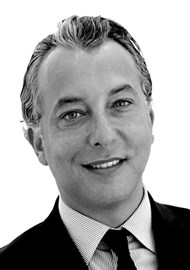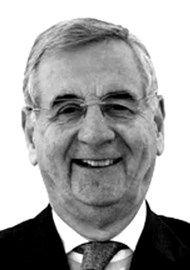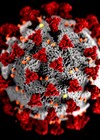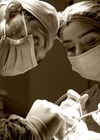Non-surgical facial rejuvenation has increased exponentially in the last 20–30 years in a society which demands immediate results with minimal downtime. The overall UK market is estimated at £3.6 billion annually. The use of facial injectables increased by 7000% between 1997 and 2016 [1].
In the UK, non-surgical facial procedures account for more than 75% of the cosmetic market [2], with easy access to these treatments and their initial lower cost in the short short term enhancing their their popularity. Nonetheless, aesthetic facial surgery remains the standard method of facial rejuvenation in the long term despite innovations in non-surgical treatments, with there being significant increases in eyelid, facial and nasal surgery over the last 20 years in the USA [1].
It is therefore vital for plastic surgeons to fully appreciate the interaction between the surgical and non-surgical facial aesthetic treatments currently available, so that they can provide a fully comprehensive approach to the treatment of their patients who are requesting facial rejuvenation.
Materials and methods
A consecutive series of patients seen at the Cadogan Clinic in London and a private clinic in Newcastle-Upon-Tyne over a three to four-month period were included in this study, only patients requesting facial aesthetic surgery being eligible. Verbal consent was obtained from each patient prior to collection of the information, which was then anonymised.
Data was collected on patient demographics, types of facial aesthetic surgery requested and the use of non-surgical facial rejuvenation treatments which each patient had undergone, prior to the surgical consultation. An analysis was also made of the number of the cohort who subsequently underwent a non-surgical facial aesthetic treatment following surgery, with documentation made on who had performed this subsequent therapeutic intervention.
Results
A total of 216 patients were identified (191 female / 25 male) with a median age of 56 years (range 22–78 years). Overall, the female patients undergoing surgery were slightly older than the males and those patients from Newcastle were on average 22.5 years older than their London counterparts.
Of the cohort, 42% had previously undergone at least one non-surgical facial rejuvenation treatment, prior to undergoing surgery; 32.4% of the group had received botulinum toxin and 28.4% facial filler injection. The remainder of the group had undergone a wide variety of alternative non-surgical treatments including several forms of energy-based therapies and thread lifts. Most of these non-surgical treatments had been administered by non-plastic surgeons and, in many cases, the qualifications of the injector / administrator were unknown.
Of the study group, 38% had previously undergone some form of aesthetic plastic surgery. The most common procedures being blepharoplasty (27 patients) and liposculpture (20 patients), followed by breast augmentation, rhytidectomy, rhinoplasty, mastopexy, facial fat grafting, lip implants, hair transplantation, labiaplasty and otoplasty.
All 216 patients in the group underwent facial rejuvenation surgery, including blepharoplasty (66.5%), facial fat grafting (46.5%), face and neck lifts (45%), facelifts (7%) and rhinoplasty (7%). Several of the group underwent multiple synchronous facial procedures.
Nine percent also had simultaneous aesthetic procedures performed at other anatomical sites, including truncal liposuction, breast augmentation, abdominoplasty, fat transfer to the dorsum of the hand, and lip reduction surgery.
Following successful surgery, 49% of the group elected to undergo a non-surgical facial aesthetic treatment. Of these, 53% had an injection of fillers, 32% had botulinum toxin, 8% underwent laser resurfacing and 7% a chemical peel. In contrast to the pre-surgical findings, the majority returned to the plastic surgeon for this treatment, as most had no prior knowledge that plastic surgeons offered this form of therapy.
Discussion and conclusion
The provision of non-surgical facial aesthetic treatments has dramatically changed over the last two to three decades, with the introduction of neurotoxins, fillers, threads and energy-based devices into the market. Prior to this influx of medical aesthetic treatments, plastic surgeons were the main providers of facial aesthetic interventions, as most were surgically based. However, with the advent of non-surgical solutions, facial rejuvenation has become a more office-based procedure [3].
In 2018, the American Society of Aesthetic Plastic Surgery reported that a total of $8.4 billion was spent on all medical and surgical aesthetic treatments. The majority (79%) was on surgical procedures, however $1.2 billion was spent on injectables with a further $587 million on other non-surgical procedures [4].
The total number of non-aesthetic procedures performed has now outstripped the number of surgical interventions, with botulinum toxin and hyaluronic acid injections increasing by 36% and 58% respectively, between 2014 and 2018 [5]. In the UK, a similar trend has been noted, with the non-surgical cosmetic industry increasing from £2.3 billion to £3.6 billion in the five years up to 2015 [6]. There is therefore a need for today’s plastic surgeons to actively embrace the benefits of non-surgical treatments, to not only enhance their revenue stream, but to keep patients in their practice and forge a better relationship with new patients [7–9]. Jacono, et al. [10] have shown that patients who decide to undergo a facelift before the age of 50 have already potentially undergone previous non-surgical aesthetic treatments, and ‘capturing’ these patients at an earlier time when they were looking at non-surgical treatments as an alternative to surgery allows the plastic surgeon to develop a strong and long-lasting relationship with the patient [10].
Today, in the field of aesthetics, the plastic surgeon faces competition from surgeons from other specialties, physicians, nurses, and those with no medical qualifications whatsoever. In 2008, the American Society of Plastic Surgery and the American Society of Aesthetic Plastic Surgeons Cosmetic Medicine Task Force interviewed 1000 prospective patients [11] and reported that “price mattered” and that patients would seek the less expensive providers and almost half would use a non-plastic surgeon for an invasive surgical procedure, if they had a good initial experience with them [8,11]. The study confirmed that non-surgical treatments are now seen as the ‘gateway’ to future potential cosmetic surgical interventions, and it is absolutely essential for accredited plastic surgeons to initially provide a wide variety of non-surgical options for the patient.
One of the challenges encountered in this study was the patients’ recollection of the number of non-surgical treatments undergone or their cost, prior to making a surgical consultation with a plastic surgeon, which prevented a more thorough evaluation of their potential costs. More worryingly was the fact that many had no accurate idea of what products had been injected, as they had been given little information prior to the aesthetic treatment being administered and many had not been told the qualifications, if any, of the person treating them.
This lack of regulation of the UK cosmetic industry led in 2013 to the Keogh Review, which recommended that all practitioners should be appropriately qualified and that an Ombudsman should oversee all private healthcare, including cosmetic procedures [2]. Unfortunately, despite these recommendations, not enough has been done by the government to regulate the cosmetic industry and protect patients.
Conclusion
The popularity of non-surgical aesthetic facial treatments has increased exponentially over the last two decades and there is no indication of it slowing down. It is crucial for plastic surgeons to embrace these fully alternative therapies into their practice, to use it as an adjunct to improve their surgical outcome, to attract a wider clientele base and maintain a constant revenue stream into their medical practice.
TAKE HOME MESSAGES
-
Non-surgical facial rejuvenation is worth £3.6 billion annually in the UK. Plastic surgeons have been slow to embrace this additional change in clinical practice.
-
Over 40% of those undergoing facial aesthetic surgery have previously undergone a facial aesthetic medical treatment. Following surgery, 49% elected to undergo a non-surgical facial aesthetic treatment.
-
Plastic surgeons need to be actively involved in the provision of non-surgical facial aesthetic treatments
References
1. ASAPS. Cosmetic Surgery National Data Bank Statistics 2016.
https://cdn.theaestheticsociety.org/media/statistics/
2016-TheAestheticSocietyStatistics.pdf
2. UK Department of Health. Review of Regulation of Cosmetic Interventions 2013.
https://assets.publishing.service.gov.uk/
media/5a7a25dee5274a319e77831c/
Review_of_the_Regulation_of_Cosmetic_Interventions.pdf
3. Amar RE, Fox DM. The facial autologous muscular injection (FAMI) procedure: an anatomically targeted deep multiplane autologous fat-grafting injection. Aesthetic Plast Surg 2011;35:502–10.
4. Hoppe IC, Pastor CJ, Paik AM. An analysis of leading, lagging and coincident economic indicators in the United States and its relationship to the volume of plastic surgery procedures performed. Ann Plast Surg 2012;69:471–3.
5. ASAPS. Cosmetic (Aesthetic) Surgery National Data Bank 2018.
https://cdn.theaestheticsociety.org/media/statistics/
2018-TheAestheticSocietyStatistics.pdf
6. Save Face. Laws and regulations for the Non-Surgical Cosmetic Industry.
https://www.saveface.co.uk/en/blog/
post/laws-and-regulations-for-the
-non-surgical-cosmetic-industry
7. Nahai F. The aesthetic surgeon’s new normal. Aesthet Surg J 2015;35:105–7.
8. Richards BG, Schleicher WF, D’Souza GF, et al. The role of injectables in aesthetic surgery: financial implications. Aesthet Plast Surg 2017;37:1037–43.
9. Dayan S, Lertsburapa K, Patel A. Influence of botulinum toxin A injection in the practice management of facial Plastic Surgery. Arch Facial Plast Surg 2007;9:211–2.
10. Jacono AA, Malone MH, Lavin TJ. Nonsurgical facial rejuvenation procedures in patients under 50 prior to undergoing facelift: habits, costs and results. Aesthet Plast Surg 2017;37:448–53.
11. D’Amico RA, Saltz R, Rohrich RJ, et al. Risks and opportunities for plastic surgeons in a widening cosmetic medicine market: future demand, consumer preferences and trends in practitioners’ services. Plast Reconstr Surg 2008;121:1787–92.
[All links last accessed February 2024]
Declaration of competing interests: None Declared.
Editor’s Comment:
This is another very interesting paper from James Wokes and his team. One point that leapt out at me was that when the two cohorts were compared (North versus South) the average age of the Northern patients was 22.5 years older. That is fascinating. I wonder if any attempt was made to identify the educational status, economic background and actual location of the home in both cohorts. I would have thought that London (the Cadogan clinic) would attract people from a wider geographical area and higher social status than a private clinic in Newcastle Upon Tyne. This is no reflection on the standard of care in the North but more an indication of the North-South divide that affects many aspects of life. Perhaps this topic is ripe for further discussion.
Andrew Burd, Co-Editor, The PMFA Journal.
COMMENTS ARE WELCOME



